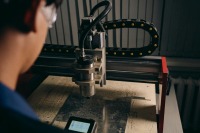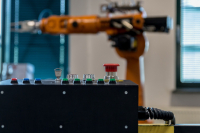It seemed that such an advanced technological development would be possible in at least a few centuries.
However, everyday life shows us that this concept, which was explored in productions such as Blade Runner and Cyberpunk, is closer than it may seem. A great example of a revolutionary technology is BrainAccess. Why is it so innovative and how is it building the future? Find out below!
Brain-computer interface - the future of digitization
The ability to connect the human brain to a computer offers virtually endless possibilities. This is evident in today's brain examinations, which can detect the smallest defects, using electrodes placed directly on the subject's skull. Until now such technology has only been used in medical research.
Today, when technology surrounds us at virtually every turn, the idea of a revolutionary brain-computer interface offers unlimited possibilities. Thanks to such an interface, it will be possible to use modern devices and solutions that today are only a concept. This is why BrainAccess.ai is an innovative device that opens up completely new possibilities for developers and companies!
BrainAccess - a true revolution?
The brain-computer interface must be based on a convenient device that will transmit signals from the human brain. Of course, the solution of the future is implants directly placed in the brain, however, today there is a much less invasive solution.
BrainAccess offers EEG solutions for brain-computer, human-machine interfaces and other applications. It is distinguished by its dry EEG electrodes, wireless connectivity and ergonomic design. As a result, the solution is simply made for modern forms of applications and brain-computer interfaces. BrainAccess is also a BCI library, which is full of algorithms for connecting the brain to the computer in a fast and secure way.
The future is very promising, as solutions previously known from sci-fi movies become our modern reality. Here you will find further info on portable EEG cap kits. This solution is now becoming increasingly popular, and certainly many new projects and applications will operate on the basis of an efficient brain-computer interface.








